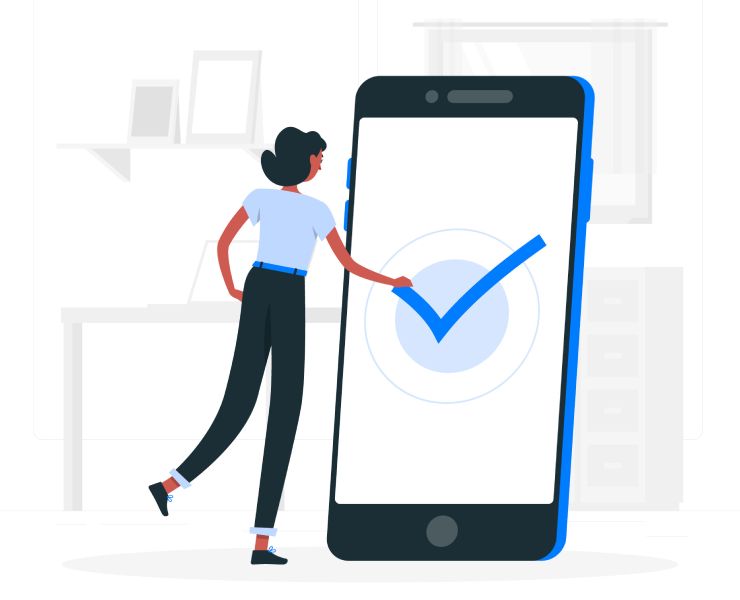If you’re musing on the role of online identity verification amidst the tech-driven era, let’s dive deep into this.
Opening an account or getting services by visiting brick and mortar locations have almost lost their role and so do the traditional identity verification solutions. The customer verification market is witnessing a paradigm shift from manually performed identity verification to online identity verification.
Companies are harnessing the power of technological advancements, resulting in a substantial rise in digital transaction volume and value. Customers are reaping the benefits of easy accessibility, convenience, and quick results.
But what about cybersecurity?
Businesses are undeniably utilizing the potential of digital transformation, however, it comes with a severe cost. Increasing digital payments have witnessed a steep rise in data breaches, identity theft, fraud, and money laundering.
This is where identity verification solutions come into view.
Defining What Exactly Online identity verification Is
Digital identity verification refers to the process of verifying a person’s identity and ensuring they’re who they say they are. While opening a bank account or applying for a loan, customer verification plays a vital role in risk management and fraud prevention.
Online ID verification helps companies in combating fraud and minimizing risk. With AI-integrated identity verification methods such as biometric verification, face recognition, and ID document verification, customers can be verified rapidly.
Identity verification solutions assist businesses with instant, accurate verification during customer-not-present situations. They allow financial institutions and other companies to run consistent identity checks and determine the red flags if any.
Digital ID Verification is Gaining Traction Across Industries
Be it a financial industry, education sector or a Buy Now Pay Later company, identity verification services have become a vital need for every business.
If put into figures, data breach costs rose from USD 3.86 million to USD 4.24 million in 2021. It has been reported as the highest average total cost in the last 17 years. Not just this, losses due to identity theft reached around $721.3 billion in 2021.
These stats evidence why identity verification solutions are more important than ever. Let’s count on greater reasons for why you should opt integrating ID verification solutions into your systems.
“Online identity verification makes to secure transactions.” Fraudsters are highly using stolen identities to commit cybercrimes such as payment card fraud, account takeovers, and more. Identity verification solutions help companies detect any such suspicious activity before onboarding the customers and minimize fraud-related risks. Further, it authenticates users consistently and enhances the overall security. ID document verification and biometric authentication are the most common methods to prevent unauthorized access of scammers.
In addition to maintaining the security of transactions, ID verification solutions enable companies to build online trust. They create value by onboarding legitimate customers in minimal time through automated ID verification services. Seamless onboarding process and satisfactory user experience help drive conversions or account opening rates.
KYC/AML compliance assures clients that their data will remain safe, establishes trust, and prevents you from reputational damage. Further, non-compliance to KYC/AML regulations may cost you hefty fines and financial loss. Integrating simple, effective ID verification solutions help companies to meet regulatory measures and prevents potential penalty.
The reason why digital ID verification services have gained momentum is it reduces the chances of human errors by verifying remote user accurately. Two-factor authentication mitigates the risk of money laundering by verifying government-issued documents as well as performing facial verification.
Industries Requiring Identity Verification Solutions
From preventing fraud to complying with regulatory obligations, online ID verification resolves fraud-related issues in seconds. Here’s a list of common use cases of the online ID verification process.
Banks and financial institutions top the list of industries requiring digital identity verification solutions. Firm identity verification helps financial institutions to remain compliant and combat identity theft, data breaches & money laundering. KYC solutions enable them to recognize suspicious behavior of clients and make financial transactions safe, secure.
If we shed a light on the retail sector, e-commerce sites are observing steady growth. The rising cases of identity fraud make it crucial for the e-commerce sector to check if the customer is genuine and ensure that transactions are secure. Compliance with KYC/AML solutions further cut-off account takeovers and similar activities. Online ID verification assists companies with a frictionless process, preventing client abandonments.
With the advent of the pandemic, telehealth services have marked a severe growth providing easy checkups at patients’ convenience. However, the service provider has to keep patient information safe and secure. They are also required to verify a patient’s identity to meet HIPAA requirements. Digital identity verification help businesses in a multitude of ways such as compliance checks, onboarding remote patients quickly, reducing medical identity theft, maintaining accurate medical records, and avoiding fraudulent attacks.
Government services such as health assistance, surveys, employment schemes and more require trusted ID verification software providers to help them deliver services securely.
A few other sectors using online ID verification services include cryptocurrency, Fintech, telecommunications, gaming, age-restricted businesses, insurance, and more.
The Bottom Line
Transitioning from traditional verification means offering extensive benefits. Customers are compelling identity verification service providers to keep raising the bar and provide the most effective solutions. Amid the evolving trends in the market, companies should update their identity verification process at regular intervals. They should offer a seamless, secure, and quick ID verification process to safeguard the global payments ecosystem against identity theft and other illicit activities.


